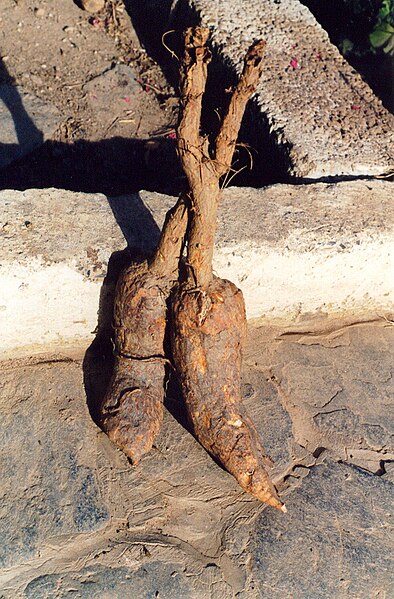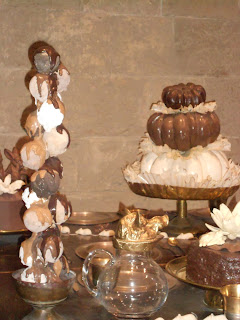This post focuses on the odd things that exist in the ‘Harry
Potter’ series. This ranges from different purpose of normal food to unusual oddities
to potions.
Chocolate
This treat has already been discussed briefly in sweets.
However, chocolate also has a medicinal purpose in the magical world. In the Prisoner of Azkaban, the Dementors (‘things’
that guard the wizarding prison) have a horrible effect on people. The first
time that Harry has an encounter with them, he faints and screams. When he
wakes up, Professor Lupin hands him “a particularly large piece” (67) of
chocolate.
“Harry took a bite and to his
surprise felt warmth spread suddenly to the tips of his fingers and toes” (68)
It is clear that the chocolate has instantly made him feel
better. There are many Dementor-related occasions where Lupin gives Harry
chocolate when he isn’t feeling well. Madam Pomfrey agrees with this solution
to relieve stress after a shock. This dual purpose of chocolate does complement
the magical theme of ‘Harry Potter’. It also plays on reality as chocolate is
seen as a stress-reliever by the public.
Philosopher’s Stone
The stone is made by Nicholas Flamel, or as we better know
him Nearly Headless Nick. It is said to have
“astonishing powers. The Stone
will transform any metal into pure gold. It also produces the Elixir of Life,
which will make the drinker immortal” (161)
This stone has very strong powers, which can be dangerous in
the wrong hands. As it is a rare object and the one at Hogwarts is the only one
that is known to exist, this stone is even more important to gain for
Voldermort, who believes he needs it to survive. This Elixir of Life has to be
consumed as a drink, which makes it relevant to this blog. It links to the
magical theme due its great and dangerous powers. However, Nicholas destroyed
the Philospher’s Stone and subsequently he will only survive long enough to
sort out his affairs (215). This shows that the stone was helping to keep him
in a ghost form for what could have been forever.
Unicorn Blood
This is a continuation from the previous section as it
relates to Voldermort and his law-breaking methods to help him survive. It is
in the Philosopher’s Stone that Harry
has first seen Voldermort since he was a baby. Voldermort is barely alive and
is not even in human form. This explains his determination to get the
Philosopher’s Stone. While he is waiting to get the stone, he drinks a unicorn’s
blood. Unicorns are labelled as “powerful magic creatures” (183), which mean
that its blood is very valuable and great.
“’… it is a monstrous thing, to slay
a unicorn, said Firenze. ‘Only one who has nothing to lose, and everything to
gain, would commit such a crime. The blood of a unicorn will keep you alive,
even if you are an inch from death, but at a terrible price. You have slain
something pure and defenceless to save yourself and you will have but a half
life, a cursed life, from the moment the blood touches your lips.’” (188)
“Unless all you need is to stay
alive long enough to drink something else – something that will bring you back
to full strength and power – something that will mean you can never die” (189)
It is represented as a horrendous thing to do and even as
sinful because of the purity of the unicorn. This act makes it increasingly
obvious that Voldermort was only thinking of himself and his own immortality. Unicorn
blood is an unusual food and therefore represents fantasy foods. Both unicorn
blood and the Elixir of Life do more than give someone energy and provide
nutrients; they can be drunk to lengthen life. However, this is frowned upon in
the magical world because they are not being used in the correct way.
Potions
There are a large number of potions that are mentioned
throughout the books. Creating potions is just like cooking food. If too much of
an ingredient is added, there is no choice but to start again. This is the same
as cooking. If you add too much salt to your dish, there is no antidote.
An important potion is the Polyjuice Potion, which allows
the drinker to change their appearance. It is first introduced in the Chamber of Secrets and again used in
the Goblet of Fire and the Deathly Hallows. The potion is very
difficult for Hermione, Harry and Ron in the
Chamber of Secrets because it is more advanced magic than they are used to
at this point.
“’This is the most complicated
potion I’ve ever seen,’ said Hermione, as they scanned the recipe. ‘Lacewing
flies, leeches, fluxweed and knotgrass,’ she murmured, running her fingers down
the list of ingredients. ‘Well they’re easy enough, they’re in the student
store-cupboard, we can help ourselves. Oooh, look, powered horn of a Bicorn –
don’t know where we’re going to get that… Shredded skin of a Boomslang –
that’ll be tricky too – and of course a bit of whoever we want to change
into.’” (124)
The ingredients needed for this potion are difficult for
them to acquire, which also adds to the advanced level of magic needed. In
addition, Hermione calls the things needed as ‘ingredients’. This presents the
potion as a recipe, which makes it seem that the potion has to be drunk or
eaten. The ingredients themselves are very strange as the real ones are not
heard of often. All of them do exist in real life, except bicorn (mythical
creature that is meant to be similar to a cow) and boomslang (a snake which is
not eaten/used in medicines in the western world). The length of time that the
recipe takes to brew is a month because some of the ingredients have certain
requirements.
“’Well, as the fluxweed has got
to be picked at the full moon and the lacewings have got to be stewed for
twenty-one days… I’d say it’d be ready in about a month, if we can get all the
ingredients’” (125)
The specific requirements needed for some of the ingredients
make this potion even more difficult. The strange and uncommon ingredients and
this long brewing time clearly demonstrates that this is a fantasy story, and
Rowling has definitely played up to this magical aspect.
The description of the potion when it is ready to be drunk
is very unappealing.
“Behind her they heard the gloop gloop of the bubbling
treacle-thick Potion… Close up, the Potion looked like thick, dark mud,
bubbling sluggishly” (161)
This is a rare description of food or potion by Rowling. She
uses onomatopoeia to add the unappealing and murky description. This does not
change when they add the hairs to the potion. As each of them have collected hairs
from different people, each of their potions turn different colours. Hermione’s
turned “a sick sort of yellow”, Harry’s turned “the khaki colour of bogey” and
Ron’s turned “a dark, murky brown” (161). Each description is very off-putting
and unappealing to the eye. Rowling describes the taste of one as “overcooked
cabbage” (162), which does not make me want to try this potion at all. In addition,
cabbage has been used before to suggest a bad smell. The effect of this potion
is the complete opposite to the warming feeling of Butterbeer. This is not
surprising as the potion transforms the drinker to look like someone else,
which must be painful. The effects that Rowling mentions are burning,
breathlessness, melting and painfulness.
This potion does not go smoothly for everyone though.
Hermione turns into a cat as she accidently took a cat hair of her chosen
person’s robe (168). Unfortunately, the potion did not wear off after an hour
like it did for Ron and Harry. Polyjuice Potion is definitely not meant for
animal transformations. Hermione had to go to the hospital ward in the school
so that she could take a potion to reverse the effects. Potions are
unsurprisingly a vital part of the magical world and there are many purposes of
potions and antidotes to many potions.







































